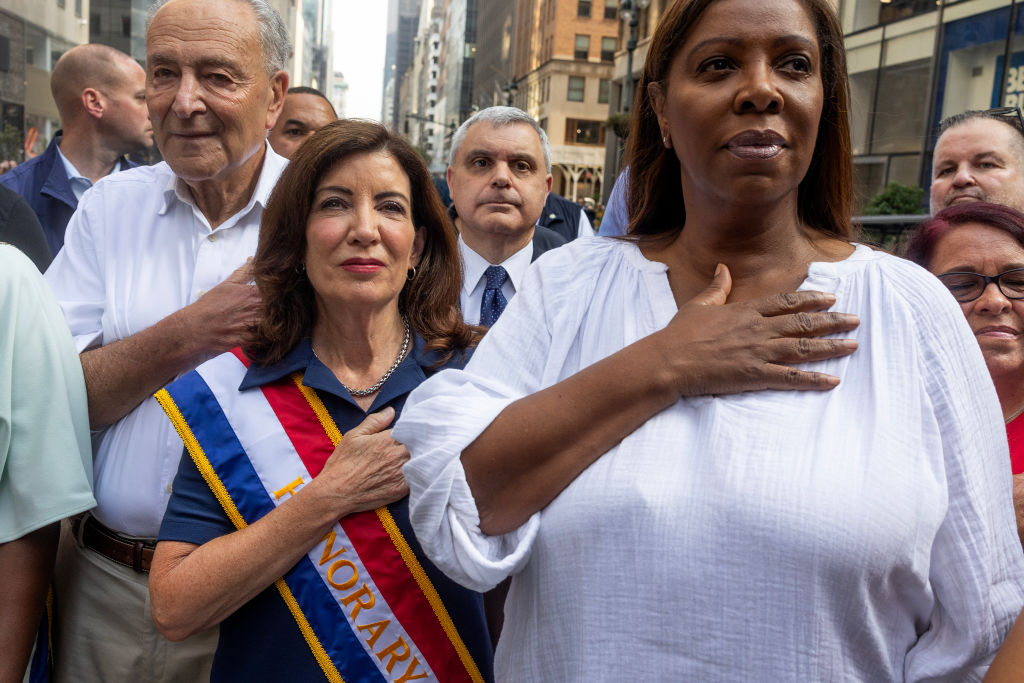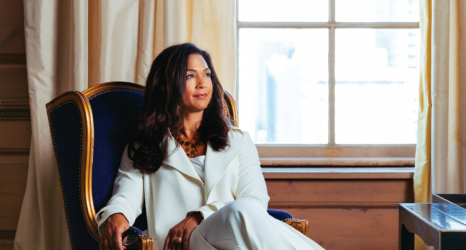By amplifying the value of small donations, public financing turns a challenge for women candidates—reliance on a broad network of small donors—into an opportunity.

In recent years, the share of women in public office has surged.
- In 2000, just 65 women served in Congress. Today, the number is 151, more than a quarter of the total 535 voting members.
- Likewise at the state level, women now make up about a third of elected officials.
Yet despite these historic gains, women—who make up roughly half of the population—remain starkly underrepresented in government. And for women of color, the disparity is even greater.
No single factor created this gap, and no single change will fix it. But part of the problem is how campaigns are funded—and changing that will make a significant difference.
It’s expensive to run for office: Political ad spending in the 2024 election cycle is expected to exceed $16 billion. And the price of campaigning is a greater barrier for women, who typically have less access than men to the wealthy donors who provide most of this money.
Enter: public financing, a simple but powerful reform that uses public funds to boost small donations to candidates. It’s a policy that can help any candidate willing to engage with a broad base of voters—but some of its biggest beneficiaries are women, particularly women of color, who make up 25 percent of the country’s population but less than 10 percent of state and federal elected offices.
Just ask New York Attorney General Letitia James, who got her start in New York City politics without the benefit of wealthy supporters and has said, “I wouldn’t be where I am today if not for public financing.” Public financing also amplifies the community-based support of other candidates who have faced barriers under the status quo, including members of the LGBTQ+ community.
While public financing on its own will not resolve the gender inequities in our politics, it’s a vital tool for ensuring this pipeline continues to exist.
Women candidates rely more heavily than men on small donors, typically defined as those giving $200 or less. From 2012 to 2018, women running for the U.S. House raised on average a 70 percent greater share of their funds from small donors than their male opponents. But it’s tough to run a competitive campaign this way if opponents have access to big checks.
Unsurprisingly, women candidates have historically raised less money than men. In 2018, for example, women running for Congress in the most competitive districts raised an average of $500,000 less than their male counterparts.
Public financing is the most powerful reform available to address this fundraising gap. The policy comes in a variety of forms, but most seek to boost the power of small donations.
In one popular model—the small donor match system—modest contributions are multiplied with public funds. An example is New York state, where a groundbreaking program is in place for its first electoral cycle this year.
- There, in-district donations to state legislative candidates of under $250 are matched on a sliding scale, offering the highest match to the smallest donations.
- For statewide races, eligible donations are matched six to one. That means a donation to a statewide candidate of say, $10, is boosted by $60 in matching funds, and becomes worth $70 to the candidate.
By amplifying the value of small donations, public financing turns a challenge for women candidates—reliance on a broad network of small donors—into an opportunity.
In 2021, New York City elected its most demographically representative city government in history, thanks in part to public financing. Women more than doubled their representation from 27 percent to 61 percent. And people of color increased their representation from 51 percent to 67 percent. Notably, women and people of color who won or were competitive in their primaries raised as much, on average, as their white and male counterparts.
In recent years, public financing has also boosted representation of women, including women of color, in Albuquerque, N.M., Montgomery County, Md., and Washington, D.C.
Changes like these at the local and state level also have long-term effects for women’s representation in the U.S. Congress, where nearly half of current members previously served in state legislatures. While public financing on its own will not resolve the gender inequities in our politics, it’s a vital tool for ensuring this pipeline continues to exist.
Fortunately, it has momentum; 14 states and 26 localities across the country have adopted the reform, with more actively considering it. And at the federal level, the Freedom to Vote Act would establish a public financing option for U.S. House candidates.
A diverse and broadly representative government is better able to understand and address the priorities of all Americans, from reproductive rights to social programs to commonsense gun control. With more jurisdictions adopting or expanding existing public financing programs, including efforts in Minnesota, Hawaii and Chicago, this crucial reform can continue to help improve representation for women across the country.
Up next:
U.S. democracy is at a dangerous inflection point—from the demise of abortion rights, to a lack of pay equity and parental leave, to skyrocketing maternal mortality, and attacks on trans health. Left unchecked, these crises will lead to wider gaps in political participation and representation. For 50 years, Ms. has been forging feminist journalism—reporting, rebelling and truth-telling from the front-lines, championing the Equal Rights Amendment, and centering the stories of those most impacted. With all that’s at stake for equality, we are redoubling our commitment for the next 50 years. In turn, we need your help, Support Ms. today with a donation—any amount that is meaningful to you. For as little as $5 each month, you’ll receive the print magazine along with our e-newsletters, action alerts, and invitations to Ms. Studios events and podcasts. We are grateful for your loyalty and ferocity.





